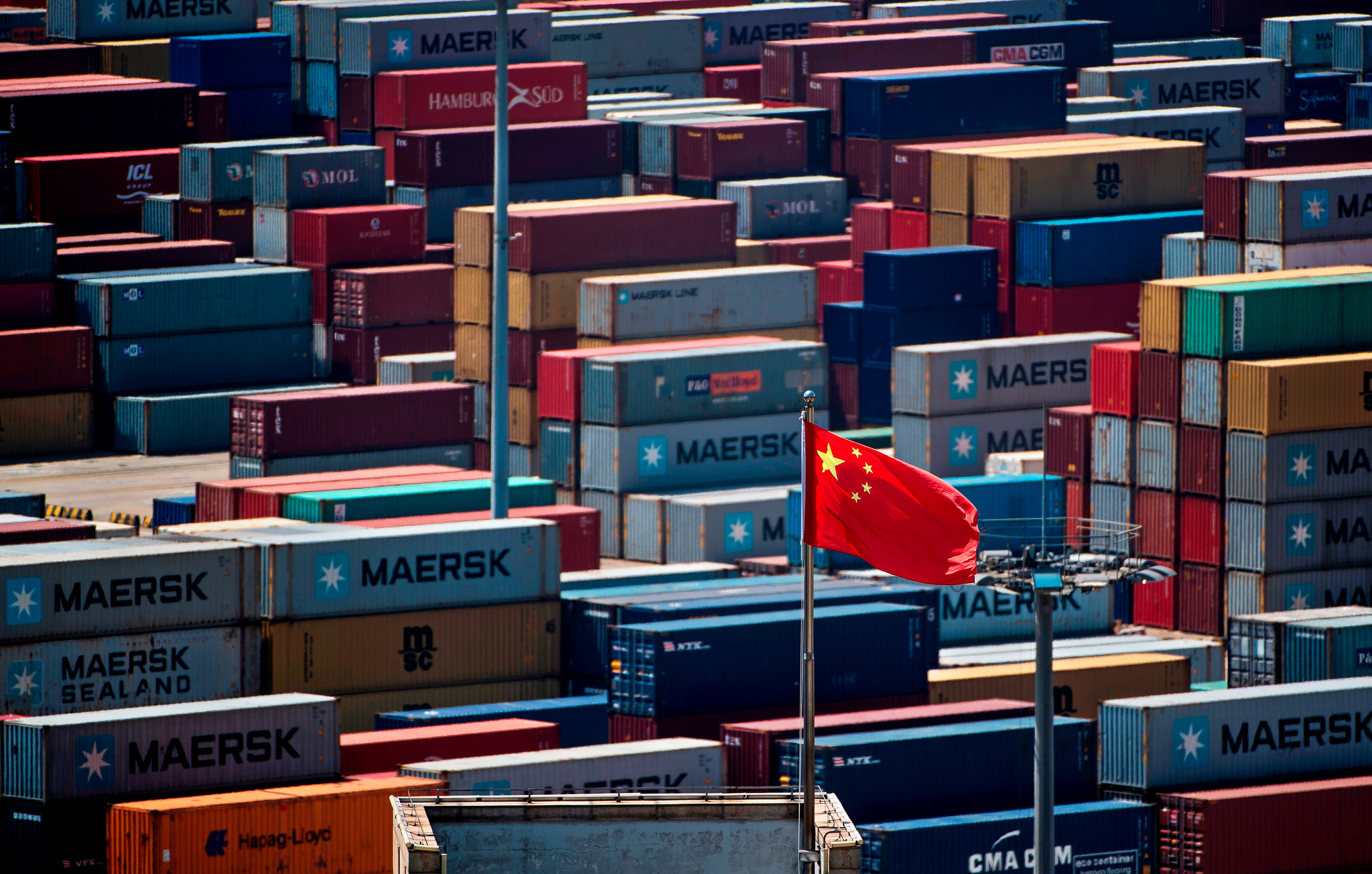Significant US Tariffs On Southeast Asian Solar Products: Details Of The 3,521% Duty

Table of Contents
The Investigation Leading to the 3,521% Duty
The 3,521% duty isn't arbitrary; it's the culmination of an extensive investigation into allegations of unfair trade practices by Southeast Asian solar manufacturers. This involved two key types of duties: anti-dumping and countervailing duties.
Anti-Dumping and Countervailing Duties
Anti-dumping duties are levied when a foreign company sells its products in a foreign market at a price significantly lower than its domestic price or the price charged in other markets (dumping), causing injury to domestic industries. Countervailing duties target products receiving government subsidies in their country of origin, giving them an unfair competitive advantage. In the case of the Southeast Asian solar products, the investigation focused on both allegations. Petitioners, primarily US-based solar manufacturers, argued that Southeast Asian competitors were engaging in both dumping and benefiting from substantial government subsidies, undercutting their ability to compete fairly in the US market.
- Investigation Process: The Department of Commerce (DOC) spearheaded the anti-dumping and countervailing duty investigations, analyzing financial data, production costs, and trade patterns. The International Trade Commission (ITC) then determined whether the allegedly unfair trade practices caused material injury to the US solar industry.
- Evidence Presented: Petitioners presented detailed evidence, including financial statements, government documents, and market analysis, to support their claims of dumping and government subsidies.
- Investigation Timeline: The investigation spanned several months, involving multiple stages of data collection, analysis, and hearings before a final determination was reached.
Impact on Southeast Asian Solar Manufacturers
The 3,521% tariff has imposed crippling financial burdens on Southeast Asian solar manufacturers.
Financial Consequences
The exorbitant duty renders Southeast Asian solar products effectively uncompetitive in the US market. Many companies face:
- Severe financial losses: Profits evaporate, and many businesses struggle to remain viable.
- Potential bankruptcy: Several solar manufacturers are at risk of bankruptcy due to the sudden and drastic loss of a major export market.
- Significant job losses: Mass layoffs are likely as companies downsize or close down operations entirely.
Supply Chain Disruptions
The tariff’s impact extends far beyond the affected manufacturers. It's caused significant disruptions to the global solar supply chain:
- Increased costs: The US market is a significant consumer of solar panels. The reduced supply from Southeast Asia forces buyers to seek alternative suppliers, often at higher prices.
- Project delays: Renewable energy projects across the US face delays as developers struggle to secure affordable and timely supplies of solar panels. This ripple effect impacts the entire renewable energy sector.
- Affected Countries: Vietnam, Cambodia, and Malaysia are among the Southeast Asian countries severely affected by this trade action.
Implications for the US Solar Industry and Consumers
While intended to protect the US solar industry, the tariff's impact is complex and potentially counterproductive.
Increased Solar Panel Costs
The reduced supply and increased competition from other suppliers are likely to lead to higher solar panel prices for US consumers.
- Price increase: Consumers will face substantially higher costs for solar panel installations, potentially hindering the growth of solar adoption.
- Reduced solar energy adoption: Higher costs could discourage homeowners and businesses from investing in solar energy, slowing the transition to renewable energy sources.
Impact on Renewable Energy Goals
The tariff undermines the US's climate change mitigation goals and its commitment to renewable energy expansion.
- Obstacles to renewable energy targets: The higher costs and reduced supply threaten the nation's ability to meet its ambitious targets for renewable energy generation.
- Environmental consequences: A slower transition to renewable energy sources leads to continued reliance on fossil fuels, exacerbating climate change.
Potential Legal Challenges and Future Outlook
The substantial impact of these tariffs has naturally prompted consideration of legal challenges.
Legal Recourse
Southeast Asian manufacturers and US importers may challenge the tariffs through various legal avenues.
- WTO Dispute Settlement: A challenge to the WTO (World Trade Organization) is a possibility. This could involve a lengthy legal process with an uncertain outcome.
- Domestic litigation: Legal challenges may also be brought within the US court system, challenging the methodologies used in the investigation or alleging other procedural errors.
Long-term effects on US-Southeast Asia trade relations
The tariffs strain US-Southeast Asia trade relations and could lead to retaliatory measures from affected countries.
- Trade tensions: The tariffs increase trade tensions between the US and key Southeast Asian nations.
- Negotiations and trade agreements: The situation may lead to renegotiations of trade agreements or attempts to find alternative solutions to resolve the trade dispute.
Conclusion
The 3,521% US tariff on Southeast Asian solar products is a significant development with far-reaching consequences. It has severely impacted Southeast Asian solar manufacturers, disrupted global supply chains, and raised solar panel prices for US consumers, potentially hindering the country’s renewable energy goals. While intended to protect the US solar industry, the long-term effects remain uncertain and subject to potential legal challenges and ongoing trade negotiations. Stay informed about developments surrounding US tariffs on Southeast Asian solar products and their implications for the renewable energy sector and global trade. Further research into the "impact of US solar tariffs," "Southeast Asia solar trade," and the "3521% duty implications" is encouraged.

Featured Posts
-
 Motor Sport 197 Hp Memahami Ketidakhadiran Kawasaki Z H2 Di Pasar Indonesia
May 30, 2025
Motor Sport 197 Hp Memahami Ketidakhadiran Kawasaki Z H2 Di Pasar Indonesia
May 30, 2025 -
 Kawasaki Z H2 197 Hp Mengapa Motor Ini Tidak Resmi Masuk Indonesia
May 30, 2025
Kawasaki Z H2 197 Hp Mengapa Motor Ini Tidak Resmi Masuk Indonesia
May 30, 2025 -
 Gorillazs September Live Shows Dates Locations And Ticket Information
May 30, 2025
Gorillazs September Live Shows Dates Locations And Ticket Information
May 30, 2025 -
 Glastonbury Festival Resale Tickets Your Guide To Prices And Purchase
May 30, 2025
Glastonbury Festival Resale Tickets Your Guide To Prices And Purchase
May 30, 2025 -
 Elon Musks Alleged Paternity Of Amber Heards Twins The Evidence
May 30, 2025
Elon Musks Alleged Paternity Of Amber Heards Twins The Evidence
May 30, 2025
Latest Posts
-
 Dragons Den Star Backs Life Changing Moroccan Childrens Charity
May 31, 2025
Dragons Den Star Backs Life Changing Moroccan Childrens Charity
May 31, 2025 -
 From Dragons Den To 40 Higher Profits
May 31, 2025
From Dragons Den To 40 Higher Profits
May 31, 2025 -
 Ingleby Barwick Bannatyne Health Club Padel Court Project
May 31, 2025
Ingleby Barwick Bannatyne Health Club Padel Court Project
May 31, 2025 -
 Life Changing Childrens Charity In Morocco Gains Dragons Den Stars Backing
May 31, 2025
Life Changing Childrens Charity In Morocco Gains Dragons Den Stars Backing
May 31, 2025 -
 Padel Court Development Update Bannatyne Health Club Ingleby Barwick
May 31, 2025
Padel Court Development Update Bannatyne Health Club Ingleby Barwick
May 31, 2025
